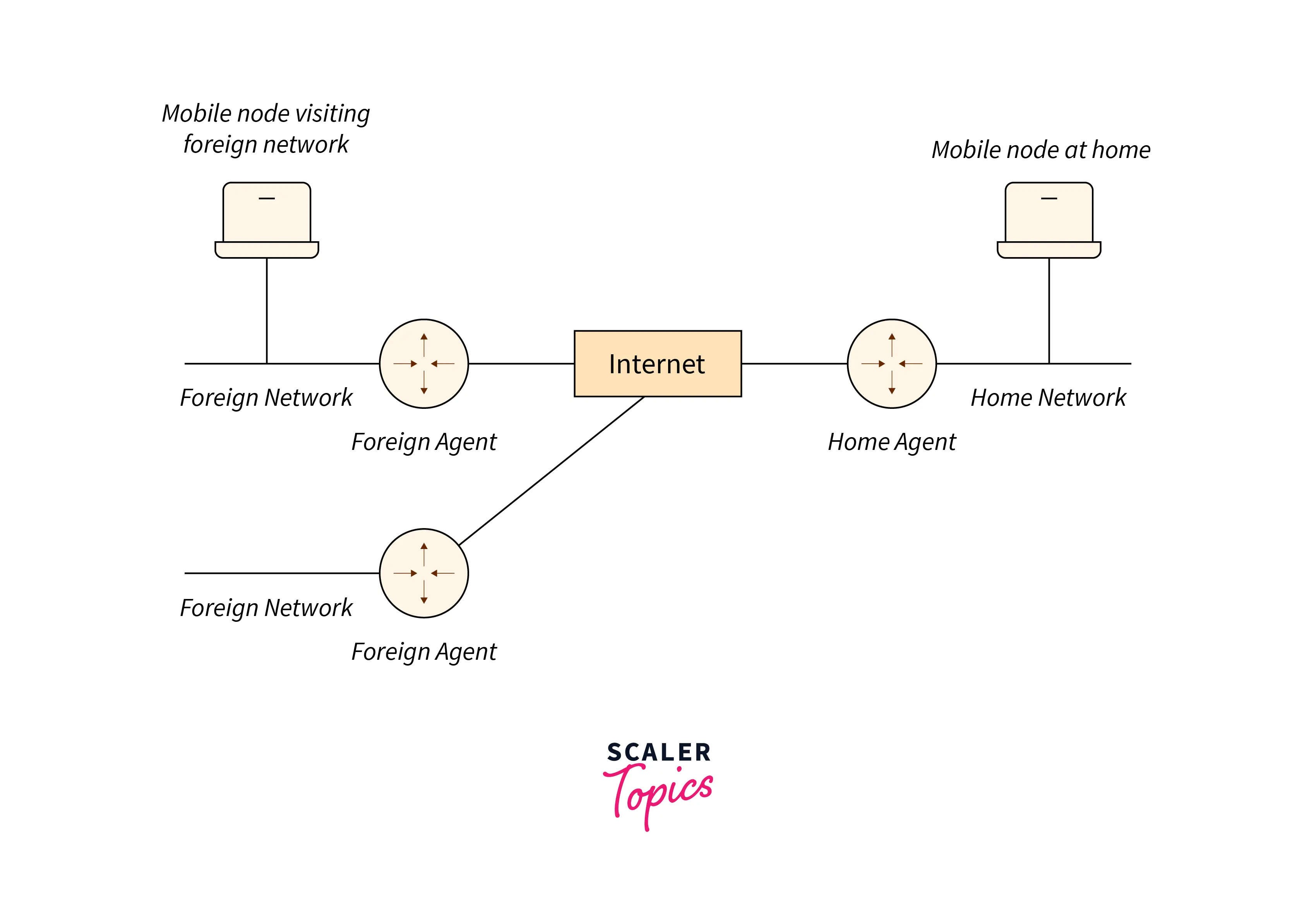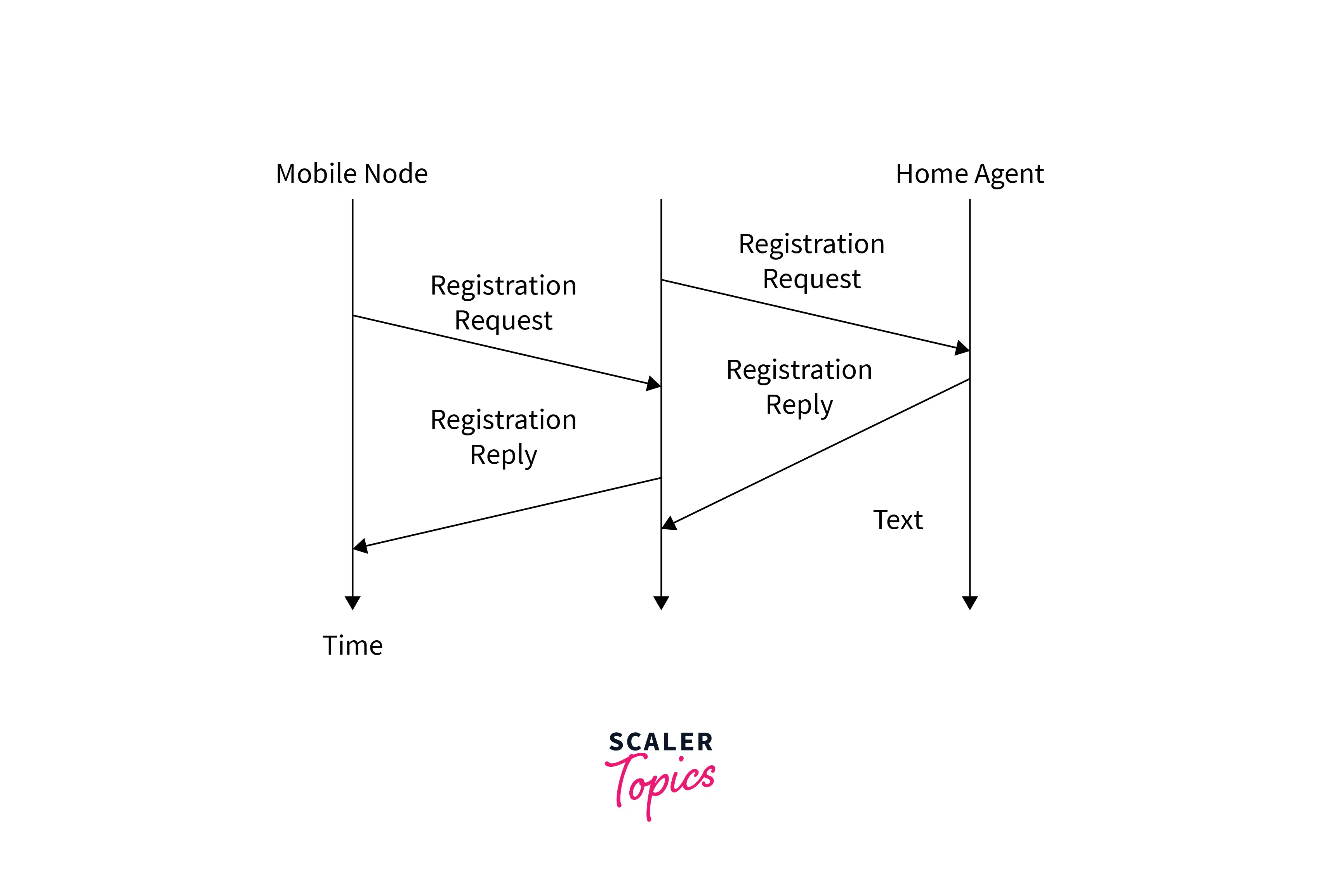What is a Mobile IP?
Overview
When a device is within its home network in an IP network, routing is based on static IP addresses. The IP address assigned to the device on the network connects it to the network via standard IP routing. This is similar to how a postal letter is delivered to the specified address on the envelope. A problem emerges when a device leaves its home network and can no longer be reached via standard IP routing. The device's active sessions are ended in this circumstance. To address this problem, the idea of Mobile IP was proposed. It enables users to switch to a different network or wireless operator while maintaining their current IP address without having their communication interrupted or their sessions or connections lost.
What is a Mobile IP?
Mobile IP is a communication protocol (developed by extending Internet Protocol, IP) that enables users to travel from one network to another network while maintaining the same IP address. It assures that communication will not be interrupted by the user's sessions or connections, which is one of the major motivations for using mobile IP.
In simple words, Mobile IP is an IETF (Internet Engineering Task Force) standard communications protocol that allows users of mobile devices (such as laptops, PDAs, mobile phones, and so on) to move from one network to another network while keeping their permanent IP (Internet Protocol) address.
Components of a Mobile IP Network
The components of a mobile IP are as follows:
Mobile Node
The mobile node is an end system or hand-held device, such as a laptop, Personal Digital Assistant(PDA), or cell phone, with network roaming software.
Home Network
It is the network to which the mobile node was assigned initially based on its IP address (home address).
Home Agent(HA)
The home agent(HA), which is located in the home network, provides numerous services to the mobile node. The packet tunnel towards the mobile node begins at the home agent. The house agent maintains a location record, which is updated with the current COA's location (care-of address).
Foreign Agent(FA)
The mobile node can receive various services from the foreign agent while connected to the foreign network. The foreign agent can use the COA (Care of Address) to forward packets to the mobile node and act as a tunnel endpoint. The foreign agent may serve as the MN's default router. It can also provide security services because they are part of the foreign network, in contrast to the mobile node, which is merely visiting.
Care-of-Address(COA)
The Care-of-address specifies the mobile node's current IP location. All IP packets directed to the mobile node are routed to the COA rather than directly to the mobile node's IP address. A tunnel is used to transport packets to the mobile node. To be more specific, the COA denotes the tunnel's endpoint or the address where packets exit the tunnel. The care-of-address has two possible locations:
- Foreign agent Care-of-Address:- The COA could be at the foreign agent's IP address. The tunnel endpoint is the foreign agent, which passes traffic to the mobile node. This COA is shared by many mobile nodes that use a foreign agent.
- Co-located Care-of-Address:- If the mobile node temporarily obtained an additional IP address that serves as a COA, the COA is co-located. The tunnel endpoint is now at the mobile node, and the address is topologically correct. Services like DHCP can be used to obtain a co-located address. One issue with this strategy is the requirement for extra addresses if MNs desire a COA. Given the scarcity of IPv4 addresses, this is not necessarily a brilliant idea.
Foreign Network
It is the current network that the mobile node is visiting (away from its home network).
Correspondent Node
Communication requires at least one partner. For the MN, the correspondent node symbolizes this partner. The correspondent node can be either permanent or mobile.
Home Address
The mobile node's home address is its permanent IP address (within its home network).
The Architecture of Mobile IP
The architecture of Mobile IP can easily be understood by the diagram given below.

Let’s understand the architecture of Mobile IP step by step.
- First, the internet host transmits a datagram to the mobile node using the home address of the mobile node (using the standard IP routing process).
- If the MN(mobile node) is connected to its home network, the datagram is delivered via the standard IP (Internet Protocol) process. Otherwise, the datagram is received by the home agent.
- If the mobile node is on a foreign network, the datagram is forwarded to the foreign agent by the home agent.
- The foreign agent then delivers the datagram(or data packet) to the mobile node.
- Datagrams are transferred from the MN to the Internet host using standard IP routing techniques. The datagrams are delivered to the foreign agent if the mobile node is in a foreign network. Finally, the datagram is forwarded by the foreign agent to the Internet host.
Working on Mobile IP
Agent Discovery
Agents periodically broadcast their agent advertisement messages to promote their existence. The mobile node getting these agent advertisement messages checks to see if the message is coming from its home agent and then evaluates whether it is in the local or foreign network.
Agent Registration

When the mobile node identifies the foreign agent, the mobile node sends a registration request (RREQ) to the foreign agent. In turn, the foreign agent submits the registration request to the home agent, including the care-of-address. The home agent sends the foreign agent a registration reply (RREP). The registration response is then forwarded to the mobile node, completing the registration process.
Tunneling
Tunneling, also known as port forwarding, is the transmission of data intended for use only within a private, usually corporate, network across a public network. It creates a virtual pipe for available packets between a tunnel entrance and an endpoint. It is the process of transmitting a packet through a tunnel, which is accomplished using an encapsulating technique. It takes place to pass an IP datagram from the home agent to the care-of-address. Every packet the home agent gets from the correspondent node is encapsulated with the source address serving as the home address and the destination serving as the care address.
Applications of Mobile IP
- It is utilized in various wired and wireless scenarios where users must carry mobile devices across different LAN subnets.
- Mobile IP technology is employed in many applications where unexpected network connectivity and IP address changes can cause problems. It was created to provide continuous and seamless Internet connectivity.
- It is frequently used in cellular networks(such as 3G, 4G) to enable seamless IP mobility between various packet data serving node (PDSN) domains.
Your journey to mastering computer networking starts here. Enroll now in our Free Computer Networking course & set the foundation for a successful career in IT.
Conclusion
- Mobile IP is a communication protocol (developed by extending Internet Protocol, IP) that enables users to travel from one network to another network while maintaining the same IP address.
- Generally, there are eight components of the Mobile IP, and there are:
- Mobile Node
- Home Network
- Home Agent
- Foreign Agent
- Care-of-Address
- Correspondent Node
- Foreign network
- Home Address
- There are three significant steps involved in working Mobile IP, i.e., agent discovery, agent registration, and tunneling.
- Mobile IP is widely used in various wired and wireless scenarios where users must carry mobile devices across different networks.
